Introduction
Design
Front
{{section_header}}{{section.name}}{{/section_header}}

Back
{{section_header}}{{section.name}}{{/section_header}}

Left
{{section_header}}{{section.name}}{{/section_header}}
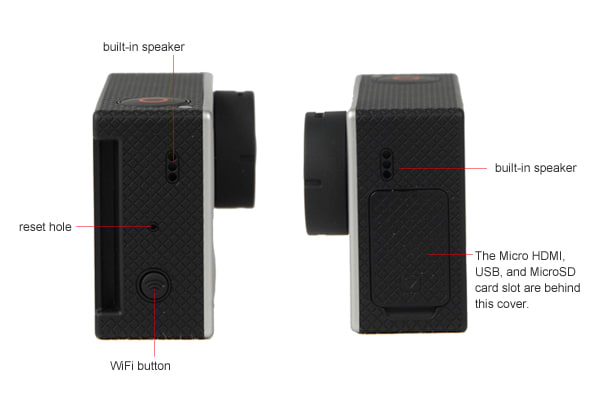
Right
{{section_header}}{{section.name}}{{/section_header}}
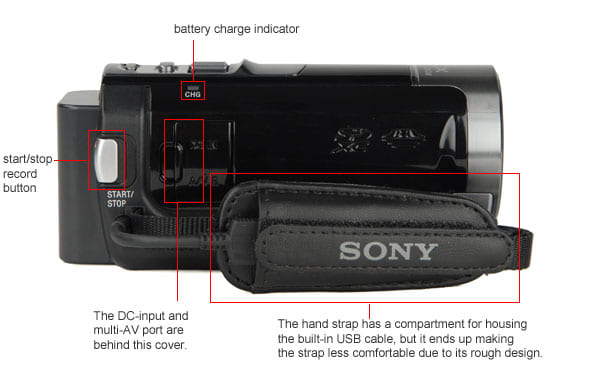
Top
{{section_header}}{{section.name}}{{/section_header}}

Bottom
{{section_header}}{{section.name}}{{/section_header}}

Size & Weight Comparison
{{section_header}}{{section.name}}{{/section_header}}
In the Box
{{section_header}}{{section.name}}{{/section_header}}

Performance
Color
{{section_header}}{{section.name}}{{/section_header}}
There's no doubt that the HDR-XR350V is capable of producing vivid, pleasing colors in bright light conditions, but the camcorder only produced average results in terms of color accuracy. The XR350V registered a color error of 4.36 and a saturation level of 94.11% in our bright light test, which are decent results, but are definitely not top-notch numbers. More on how we test color.
Take a look at the Color Error Map above and you'll see the camcorder produced certain tones, mainly blues and purples, with exceptional accuracy. It was greens, yellows, and browns, however, that gave the HDR-XR350V trouble. One of the downsides of the camcorder is its lack of any manual color modes or controls, which means you're essentially stuck with the saturation levels and color tones you get in auto mode (an example of which you can see below).
All of the camcorders shown below were in the same range when it came to color accuracy performance. The saturation level produced by each model also fell somewhere between 85% and 95%. The difference, however, is that all the other models shown below (besides the XR350V) have some sort of color controls or settings that allow you to manually adjust colors slightly to your liking.
Even though the HDR-XR350V doesn't have the best color accuracy, we like the way its colors looked in our bright light test. Tones were deep and strong without appearing oversaturated or too dark. Take a look at our variety of sample images and comparisons to judge for yourself as to which model produced the best colors in this test.
{{comparison_bars title="Color Score Comparison", attribute="Color Score", xLabel="Color Score"}}
Low Light Color
{{section_header}}{{section.name}}{{/section_header}}
The HDR-XR350V showed a significant drop in color accuracy and saturation level when we tested its low light image, but it maintained a relatively decent image. We measured the color error at 5.92 and the saturation level at 69.07%, both of which are average scores for a mid-range camcorder. More on how we test low light color.
Looking at the Error Map above you can see the XR350V had trouble rendering most colors accurately in low light, although greens and yellows gave the camcorder the most problems. Looking at the comparison images below, however, you can see the HDR-XR350V produced a brighter image than the Canon HF M31 (although the two had similar color error scores and saturation levels).
Noise
{{section_header}}{{section.name}}{{/section_header}}
The HDR-XR350 managed a strong performance in our noise test. The camcorder averaged 0.3825% noise in our bright light testing, which is slightly less noise than we measured on its higher-end cousin model, the Sony HDR-CX550V. More on how we test noise.
Looking at the cropped images above, you can see that the Sony HDR-XR350V didn't produce an image that looked quite as sharp as the competition. Although the camcorder didn't do a terrible job capturing detail, it simply was a few steps behind the rest of the pack in this category.
{{comparison_bars title="Noise Score Comparison", attribute="Noise Score", xLabel="Noise Score"}}
Low Light Sensitivity
{{section_header}}{{section.name}}{{/section_header}}
The HDR-XR350V offered mixed results in our low light sensitivity test, mainly due to a problem associated with the camcorder's wide angle lens. When we tested the camcorder normally, by using optical zoom to frame our test chart, the XR350V required 28 lux of light to register 50 IRE on our waveform monitor. This mediocre score is somewhat inaccurate, however, as the camcorder's aperture was forced to close down quite a bit as we zoomed in (because of the extreme wide angle lens). Most camcorders don't have this problem because the aperture doesn't need to close as much when we record a target that is just a few feet away. More on how we test low light sensitivity.
To accommodate for this problem, we also tested the HDR-XR350V without using any zoom (by framing our chart with the camcorder just a few inches away). Doing so resulted in a much better low light sensitivity, with the camcorder needing just 11 lux of light to reach the same levels on the waveform monitor. The lens records at such a wide angle, however, that it is unlikely most of your shots will be framed without any use of zoom. (Getting the camcorder really close to your subject also results in some fish-eye distortion at the edges of the frame.)
In the end, we took the average score from both of our low light sensitivity measurements with the camcorder in order to obtain a final score. We did the same thing with the Sony HDR-CX550V, which also has a lens with a very wide recording angle. Since we anticipate more camcorders with wide angle lenses hitting the market in the coming years, this issue is likely to come up again. We will update our testing rubric accordingly so we can compare the low light sensitivity of all camcorders on an even playing field.
{{comparison_bars title="Low Light Sensitivity Comparison", attribute="Low Light Sensitivity Score", xLabel="Low Light Sensitivity Score"}}
Low Light Noise
{{section_header}}{{section.name}}{{/section_header}}
Much like we saw in our bright light testing, the Sony HDR-XR350V did very well in our low light noise test as well. The camcorder measured 1.0225% noise in this test, which was better than any of the camcorders we compared it to (the Sony HDR-CX550V was very close, though). More on how we test low light noise.
While the HDR-XR350V did have low noise levels in this test, it also had a more blurred image than the competition. Its low light crop image above looks okay, but it clearly isn't as sharp as what you get from the Canon HF M31. Still, the Canon shows a lot more noise in its low light image, as does the Panasonic HDC-HS60. The Sony HDR-CX550V had the best low light performance of the models in this set, but it's also the only flagship camcorder in this group.
{{comparison_bars title="Low Light Noise Score Comparison", attribute="Low Light Noise Score", xLabel="Low Light Noise Score"}}
Low Light Color
{{section_header}}{{section.name}}{{/section_header}}
The HDR-XR350V showed a significant drop in color accuracy and saturation level when we tested its low light image, but it maintained a relatively decent image. We measured the color error at 5.92 and the saturation level at 69.07%, both of which are average scores for a mid-range camcorder. More on how we test low light color.
Looking at the Error Map above you can see the XR350V had trouble rendering most colors accurately in low light, although greens and yellows gave the camcorder the most problems. Looking at the comparison images below, however, you can see the HDR-XR350V produced a brighter image than the Canon HF M31 (although the two had similar color error scores and saturation levels).
Motion
{{section_header}}{{section.name}}{{/section_header}}
The Sony HDR-XR350V records HD video using a 60i frame rate and the camcorder does not have a 24p or 30p record mode. There is a 240 frames per second option on the camcorder called Smooth Slow Record, but it only records a few seconds of video and the quality isn't very good. Still, it is a useful slow motion setting that can be fun to play around with. More on how we test motion.
Video Sharpness
{{section_header}}{{section.name}}{{/section_header}}
The Sony HDR-XR350V measured a horizontal sharpness of 700 lw/ph and a vertical sharpness of 600 lw/ph in our video testing. These are decent scores for a consumer HD camcorder, but unfortunately for Sony they are also slightly worse than the competition. Since the HDR-XR350V is one of the most expensive mid-range camcorders on the market, we're somewhat disappointed with this sharpness score. More on how we test video sharpness.
{{comparison_bars title="Video Sharpness Score Comparison", attribute="Video Sharpness Score", xLabel="Video Sharpness Score"}}
Testing Samples
{{section_header}}{{section.name}}{{/section_header}}
Usability
Ease of Use
{{section_header}}{{section.name}}{{/section_header}}
The HDR-XR350V is just as easy to use as many of its Handycam predecessors from Sony. Sony did do away with its dedicated auto mode on a few models last year, however, so we welcomed the presence of the iAuto (dedicated auto mode) setting on the HDR-XR350. This option makes the camcorder easy for beginners to use, although the fact that it doesn't lock you out of accessing the menu system may result in some novice users accidentally getting lost among the long list of features and settings available on the camcorder.
Thankfully, Sony implemented its simple 'My Menu' feature on the HDR-XR350V (as well as on the rest of its Handycam models in 2010). The 'My Menu' screen simplifies the main menu to six choices, which can be customized by the user (or kept as the default six options if you don't want to change them). We like this menu a lot, especially since the main menu is very long and has a somewhat confusing navigation system with the touchscreen interface.
The camcorder does have a truncated information box that appears at the bottom of the LCD when you select a menu option. This info box can be extremely helpful, particularly when you're still getting used to the ins and outs of the camcorder. Unfortunately, the camcorder's instruction manual is very lacking in details and specifics, so certain features may take some actual hands-on experience before you figure them out completely.
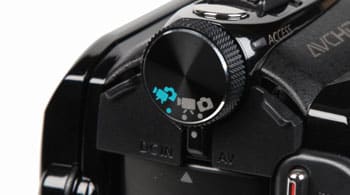
Auto Mode is confusingly called Dual Shot mode
Auto Mode
{{section_header}}{{section.name}}{{/section_header}}
Sony's Intelligent Auto (iAuto) mode generally works well as a dedicated auto mode on the HDR-XR350V. Instead of locking you out from accessing the menu system like many dedicated auto modes do, Sony's iAuto mode simply deactivates itself if you select a manual control from the menu. We're not sure how we feel about this design, as it does make the camcorder a bit more difficult for beginners, but it is also less confusing for intermediate users who may want to switch back and forth between automatic and manual control.
Auto exposure and autofocus work quickly and accurately on the XR350V, but we found the auto white balance system to work a bit slow on occasion. Once the white balance eventually did calibrate, however, the color tones looked accurate. The camcorder has a good set of scene modes, and its spot focus and exposure options are a great use of the touchscreen system (you tap the part of the screen you want to bring into focus or expose properly). The camcorder does not have an AF/AE tracking feature like you'll find on the Canon HF M31 and Panasonic HDC-HS60.
The auto slow shutter feature on the HDR-XR350V is grouped in with the camcorder's Low Lux setting. It appears that the Low Lux option may also boost gain levels as well as allowing the camcorder to utilize a 1/30 of a second shutter speed, but since there's no way to choose one or the other, you get stuck with the camcorder automatically activating both when using Low Lux. We'd prefer if these options were kept separate, or, better yet, if the camcorder had offered manual shutter speed or gain control in addition to the Low Lux.

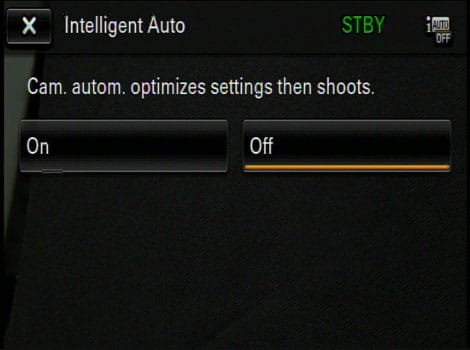
The iAuto mode button is difficult to find, but when you do find it the option for turning on the mode looks like this.
Other Auto Features
Handling
{{section_header}}{{section.name}}{{/section_header}}
The HDR-XR350V certainly isn't the most comfortable camcorder we've ever dealt with, but it's also not a handling nightmare either. The right side of the camcorder is quite bulky due to the 160GB internal hard drive strapped to this side, and it makes for an uncomfortable feeling against your palm. Instead of a round edging that conforms to the shape of your hand, the HDR-XR350V feels very boxy and rigid on its right side. Thankfully, both the start/stop record button and the zoom toggle are positioned quite well despite the boxy design—so, at least Sony made it easy to reach the most important buttons on the camcorder.

The camcorder has no joystick or control dial, so you must get used to navigating menus and adjusting controls using the touchscreen interface on the XR350V. The touchscreen works the exact same way as it does on other Sony models, but we found the 2.7-inch screen to be much more difficult to work with than the 3.5-inch screen on the Sony HDR-CX550V. Most mid-range camcorders have this same problem, however, as they all have some sort of touch-sensitive interface and most utilize 2.7-inch screens like the HDR-XR350V.

Sony doesn't include many buttons on the body of the HDR-XR350V, instead choosing to put more emphasis on the touchscreen interface (power, disc burn, iAuto, and GPS are the only features that can solely be activated using buttons). The menu system doesn't have the best navigation, but Sony does have lots of different options for cycling through menu options, so at least you can play around and figure out what system works best for you (you can tap, scroll, or jump from section to section using the touchscreen).

We do like the 'My Menu' feature on the HDR-XR350V, which is a small customizable menu that appears when you press the menu button. If you customize this menu to the six options you use most often on the camcorder, then you'll likely not have to bother with the lengthy main menu on the XR350V all that often. There are separate 'My Menus' in playback mode, video mode, and still image mode on the camcorder.

These dedicated buttons give you quick access to aperture and shutter speed controls.
Portability
{{section_header}}{{section.name}}{{/section_header}}
For a mid-range consumer camcorder, the HDR-XR350V is actually quite heavy, although its dimensions compare favorably with the Canon HF M31 and Panasonic HDC-HS60. The extra weight of the XR350V likely stems from the 160GB internal hard drive strapped to its right side. However, Panasonic HDC-HS60 also has an internal hard drive (only 120GB, though), and it weighs quite a bit less than the HDR-XR350V (see the table below). All this talk about weight and hard drives really boils down to this: would you rather have a lighter camcorder without as much internal memory, or a heavier camcorder with a huge internal hard drive? Both have their benefits when it comes to portability, so you just have to decide what's best for you.
Battery Life
{{section_header}}{{section.name}}{{/section_header}}
The Sony HDR-XR350V lasted for 109 minutes in our battery test with the camcorder's provided battery. This is an average performance for a camcorder of its class, although the XR350V lasted for a few minutes longer than the other models we compared it to. The battery compartment on the camcorder is open, which means you can purchase larger batteries from Sony if you want longer-lasting performance. More on how we test battery life.
The battery compartment has a bit of an odd design that can make it difficult to remove and insert new battery packs. Instead of a grooved, sliding battery insertion, you must fit the battery pack in awkwardly by clicking the top part into the camcorder first at an angle and then inserting the bottom portion of the battery. Once the battery is inserted correctly it stays put quite well, it's just a bit awkward getting it into the camcorder in the first place.

{{comparison_bars title="Battery Life Comparison", attribute="Battery Life Score", xLabel="minutes"}}
LCD
{{section_header}}{{section.name}}{{/section_header}}
Since the HDR-XR350V doesn't have an electronic viewfinder, you have to do all your recording using the 2.7-inch touchscreen LCD. The LCD is of average size, but we found the screen a bit too small to accommodate Sony's touchscreen interface comfortably. We didn't have nearly as much of a problem using the touchscreen with the Sony HDR-CX550V and it's 3.5-inch LCD as we did on the XR350V and its smaller screen. We wish manufacturers would increase the size of the screens on mid-range camcorders, particularly on models like the HDR-XR350V that rely on its touchscreen interface so heavily.
Stabilization
{{section_header}}{{section.name}}{{/section_header}}
The Sony HDR-XR350V did very well on our stabilization test, and the camcorder put up similar numbers to what we saw from its high-end cousin, the HDR-CX550V. The camcorder has two stabilization settings: a regular optical image stabilization (OIS) mode called Steady Shot and an Active stabilization mode that uses some digital processing. In our testing, we found no significant differences between the effectiveness of the two modes, although Sony claims the Active mode works better when you are running or moving while holding the camcorder. More on how we test stabilization.
In the charts above you can see the OIS did a good job stabilizing the video in both our low and high shake tests (72% shake reduction at the low setting and 82% reduction in the high setting). Active mode produced nearly identical results for the camcorder with 74% less shake in the low shake test and 76% reduction in the high shake test. Overall, these numbers are some of the best we've seen from a mid-range HD camcorder and they come close to matching the results from the Sony HDR-CX550V. The video below shows the HDR-XR350V's stabilization modes in action.
Manual Focus
{{section_header}}{{section.name}}{{/section_header}}
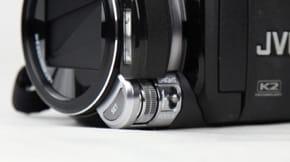
The adjustment dial makes accurate focus adjustments easy.
Manual Exposure
{{section_header}}{{section.name}}{{/section_header}}
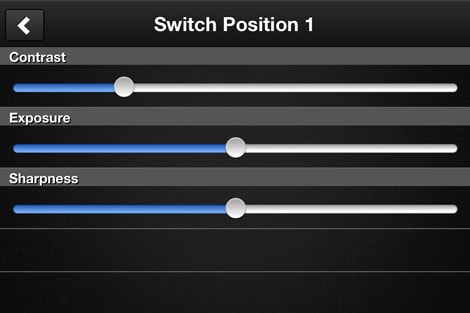
The manual exposure controls are only found on the Contour app, not on the camcorder itself.
Miscellaneous Controls
{{section_header}}{{section.name}}{{/section_header}}
x.v. Color
This setting allows the camcorder record in the xvYCC expanded color gamut. Your recorded footage will only look different if you view it on an xvYCC compatible television.
Tele Macro
Allows you to focus clearly on close-up subjects when using a full optical zoom. The camcorder automatically sets the zoom to tele when Tele Macro is engaged and changing the zoom will turn off the Tele macro setting.
Guideframe
Splits the screen into nine equal sectors to assist with framing your video. The lines don't end up on your recorded video—they're just for framing.
Conversion Lens
Use this setting when a wide angle or tele conversion lens is attached to the camcorder. It helps optimize autofocus and image stabilization to work correctly with the attached conversion lenses.
Audio Controls
{{section_header}}{{section.name}}{{/section_header}}
The HDR-XR350V is equipped with a built-in stereo microphone, but the camcorder has no external mic input or headphone jack. There's also no manual audio level control available, but the camcorder does have two microphone level options (Normal or Low). It's actually becoming quite difficult to find mic and headphone jacks on mid-range camcorders these days, although Canon does include these ports on all its models.
You can attach external microphones to the XR350V by using the hot accessory shoe, but you need to remember that the shoe only works with Sony accessories (unless you purchase a third-party adapter).
Editing
{{section_header}}{{section.name}}{{/section_header}}
Shipping with the HDR-XR350V is Sony's Picture Motion Browser version 5.0 software (PMB, for short). This is the same version of the same software that came with the HDR-CX550V and a number of other Sony camcorders that were released in 2010. For an overview of the software that ships with this and other camcorders, see our article: Video Editing Software For Your Camcorder{{product.brand.name}}-Included-Software.htm.
The HDR-XR350V's in-camera editing features include the ability to divide clips, create playlists, copy media from the internal hard drive to a memory card, and capture still photos from recorded video. There's also the Highlight and Scenario playback settings that will automatically combine your recorded clips into short videos.
Features
Compression
{{section_header}}{{section.name}}{{/section_header}}
AVCHD compression is the most common system used on consumer HD camcorders and it is employed on the HDR-XR350V. When recording standard definition video, the HDR-XR530V uses MPEG-2 compression. In standard definition mode you can set the recording aspect ratio to either 16:9 (widescreen) or 4:3. Having an SD recording option is a very useful feature, as you may find yourself in a situation where HD recording is not the best option. Sony is one of the few manufacturers to offer a standard definition record mode on its HD models.
The table below lists all of the record options available on the camcorder. One thing you should notice is the fact that the camcorder has a 24Mbps recording option, which is a new feature on Sony's 2010 camcorders—last year's models maxed out with a 17Mbps bitrate. Read more about the advantages and disadvantages of various high definition compression types.
Media
{{section_header}}{{section.name}}{{/section_header}}
The HDR-XR350V is an HDD camcorder, which means it has a built-in hard drive that is used to store video and photo recordings. The internal hard drive is quite large, coming in at 160GB, but it also adds a bit of bulk to the right side of the camcorder (and makes things a bit uncomfortable). If you don't like recording to the internal hard drive, or if 160GB of space isn't enough for you, you can also record to memory cards on the HDR-XR350V. One of the best features about the XR350V, along with most new Sony camcorders, is the fact that it is compatible with both Memory Stick PRO Duo and SD/SDHC/SDXC memory cards.
The 160GB internal hard drive will give you tons of record time—even at the highest quality setting. The table below breaks down how much video you can store on the internal hard drive with each record setting, along with the approximate record times when using a 4GB memory card. Read more about the advantages and disadvantages of various media types.

Slow Motion Modes
Still Features
{{section_header}}{{section.name}}{{/section_header}}
The HDR-XR350V isn't exactly limited when it comes to photo capabilities, but it doesn't have an abundance of still features either. The camcorder's highest resolution for capturing still images is a its 7.1-megapixel setting that takes 3072 x 2304 photos. Unfortunately, this setting is interpolated because it far exceeds the HDR-XR350V's effective pixel count of 3.54 megapixels. The highest native resolution available on the camcorder is a dismal 1600 x 1200, which makes no sense at all. Why not offer a resolution in the 3-megapixel range like Canon does with its 2100 x 1575 setting on the HF M31? We're not saying the interpolated photos look terrible on the HDR-XR350V, we'd just rather have a native resolution setting that takes full advantage of the camcorder's effective pixel count.
Also strange is the fact that you cannot record photos during recording when you are shooting video in the highest quality setting on the HDR-XR350V. In the lower quality setting you can take photos during recording, albeit with a 3072 x 1728 resolution only. It bugs us that you can't take native 1920 x 1080 photos when the camcorder is in video mode (whether you are currently recording or not).
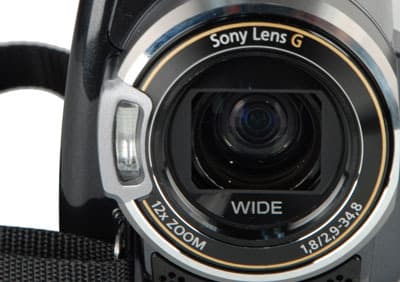
We do think Sony's smile shutter feature works well, and we like the fact that it offers three 'smile sensitivity' options for detecting smiles... but overall, we can't imagine anyone using this feature all that much. Is it really all that much work to press down on a shutter button when you see someone crack a smile instead of the camcorder doing it for you? Besides, we think the human eye is still a little better than the camcorder at detecting smiles—for now, at least.
The HDR-XR350V produced strong, accurate colors in our still image testing. The camcorder measured a color error of 2.77 and a saturation level of 105.2% in this test, both of which are better numbers than the camcorder scored in our video color testing.
In the Error Map above you can see that the XR350V rendered nearly all of the colors in our still image test accurately. Only a few blue and red tones gave the camcorder a bit of trouble. All of the camcorders shown below did quite well in this test, although the Sony HDR-XR350V was the only model in this set to have a color error below 3.0 (all the models had saturation levels around 100%).
Strangely, the HDR-XR350V produced high noise levels in our still image testing—levels that were much higher than the camcorder measured in our video testing. Still, the camcorder's 1.53% noise that we measured in this test wasn't all that much greater than what we saw from the Sony HDR-CX550V as well.
Given the fact that the HDR-XR350V has an effective pixel count of 3.54 megapixels for still photos, we didn't have high expectations for the camcorder in our still sharpness test. To our surprise, however, the XR350V did quite well. The camcorder measured a horizontal sharpness of 1977 lw/ph with no oversharpening and a vertical sharpening of 1217 lw/ph with 13.2% undersharpening. These numbers aren't far off from what the Sony HDR-CX550V was capable of, and that camcorder has a much larger sensor and pixel count than the XR350V.
Lens & Imaging System
{{section_header}}{{section.name}}{{/section_header}}

The lens on the HDR-XR350V has one of the widest recording angles we've seen on a consumer camcorder. It records at an even wider angle than the Sony HDR-CX550V, which previously held the crown for having the widest-angle lens we've tested (66.5° compared to 68° on the XR350V). Now, having a lens with that big of a recording angle can be good, as it does allow you to capture more within the frame, but it also means you have to use more zoom and you may run into some fish-eye distortion when you are shooting very close to a subject (the edges of the frame appear to bend and warp). It's also easy to accidentally catch parts of your fingers or hand wandering into the frame while you're shooting, mainly because the recording angle is so large.
In contrast, the CMOS sensor on the HDR-XR350V is nothing special. The sensor is the same 1/4-inch size that you'll find on most mid-range camcorders like the Canon HF M31, Panasonic HDC-HS60, Samsung HMX-H200, and the JVC GZ-HD620.
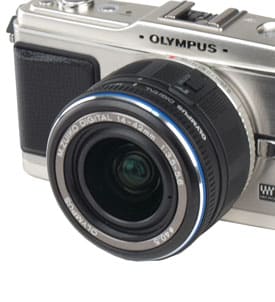
LCD
{{section_header}}{{section.name}}{{/section_header}}
Since the HDR-XR350V doesn't have an electronic viewfinder, you have to do all your recording using the 2.7-inch touchscreen LCD. The LCD is of average size, but we found the screen a bit too small to accommodate Sony's touchscreen interface comfortably. We didn't have nearly as much of a problem using the touchscreen with the Sony HDR-CX550V and it's 3.5-inch LCD as we did on the XR350V and its smaller screen. We wish manufacturers would increase the size of the screens on mid-range camcorders, particularly on models like the HDR-XR350V that rely on its touchscreen interface so heavily.
Connectivity
{{section_header}}{{section.name}}{{/section_header}}
The HDR-XR350V has a few different connectivity ports located at various spots on the camcorder. Inside the LCD cavity you'll find the HDMI and USB ports hiding behind a small, flimsy panel that flips down. This is the weakest port cover on the camcorder, although it's also probably the least important. Even if this cover were to break, these two ports would still be protected by the LCD panel when it's closed.
On the right side of the XR350V is a thicker, sturdier port cover that conceals the DC-input and Sony's proprietary AV Terminal. This AV port works with the provided AV and Component cables, as well as being compatible with a variety of Sony-proprietary cables (like S-Video and LANC). You must purchase these proprietary cables separately, however, as they do not come with the camcorder.
There is a powered (hot) accessory shoe on the top of the camcorder that is also Sony-proprietary, which means you can only use Sony accessories with the shoe unless you purchase a third-party adapter. The cover for the shoe doesn't slide open like it does on other Sony models. Instead, you pop the cover open and it hangs out at a roughly 45-degree angle. We feel like this design may be more durable than a sliding mechanism, but it does make the cover a bit obstructive when you are attaching accessories.
Oops! We almost overlooked the memory card slot on the HDR-XR350V. That's because it is located on the bottom of the camcorder in a hard-to-find location. The card slot is right next to the battery release button, and we're sure there are some people out there who will accidentally push the battery release switch thinking it has something to do with opening the card slot door. It doesn't. You simply open the door by pulling on it, and it does have a fairly strong, flexible design. The door stays open at a slight angle, but you can open it farther by applying more pressure (a spring will bring it back to the angled position, however). We assume this is so you don't accidentally snap off the cover if you forget to close it and you put the camcorder down, so we like this design... although, we'd still prefer the memory card slot to be inside the LCD cavity instead of on the bottom of the camcorder.
Battery
{{section_header}}{{section.name}}{{/section_header}}
The battery compartment has a bit of an odd design that can make it difficult to remove and insert new battery packs. Instead of a grooved, sliding battery insertion, you must fit the battery pack in awkwardly by clicking the top part into the camcorder first at an angle and then inserting the bottom portion of the battery. Once the battery is inserted correctly it stays put quite well, it's just a bit awkward getting it into the camcorder in the first place.

Media
{{section_header}}{{section.name}}{{/section_header}}
The HDR-XR350V is an HDD camcorder, which means it has a built-in hard drive that is used to store video and photo recordings. The internal hard drive is quite large, coming in at 160GB, but it also adds a bit of bulk to the right side of the camcorder (and makes things a bit uncomfortable). If you don't like recording to the internal hard drive, or if 160GB of space isn't enough for you, you can also record to memory cards on the HDR-XR350V. One of the best features about the XR350V, along with most new Sony camcorders, is the fact that it is compatible with both Memory Stick PRO Duo and SD/SDHC/SDXC memory cards.
The 160GB internal hard drive will give you tons of record time—even at the highest quality setting. The table below breaks down how much video you can store on the internal hard drive with each record setting, along with the approximate record times when using a 4GB memory card. Read more about the advantages and disadvantages of various media types.

Still Features
{{section_header}}{{section.name}}{{/section_header}}
The HDR-XR350V isn't exactly limited when it comes to photo capabilities, but it doesn't have an abundance of still features either. The camcorder's highest resolution for capturing still images is a its 7.1-megapixel setting that takes 3072 x 2304 photos. Unfortunately, this setting is interpolated because it far exceeds the HDR-XR350V's effective pixel count of 3.54 megapixels. The highest native resolution available on the camcorder is a dismal 1600 x 1200, which makes no sense at all. Why not offer a resolution in the 3-megapixel range like Canon does with its 2100 x 1575 setting on the HF M31? We're not saying the interpolated photos look terrible on the HDR-XR350V, we'd just rather have a native resolution setting that takes full advantage of the camcorder's effective pixel count.
Also strange is the fact that you cannot record photos during recording when you are shooting video in the highest quality setting on the HDR-XR350V. In the lower quality setting you can take photos during recording, albeit with a 3072 x 1728 resolution only. It bugs us that you can't take native 1920 x 1080 photos when the camcorder is in video mode (whether you are currently recording or not).

We do think Sony's smile shutter feature works well, and we like the fact that it offers three 'smile sensitivity' options for detecting smiles... but overall, we can't imagine anyone using this feature all that much. Is it really all that much work to press down on a shutter button when you see someone crack a smile instead of the camcorder doing it for you? Besides, we think the human eye is still a little better than the camcorder at detecting smiles—for now, at least.
The HDR-XR350V produced strong, accurate colors in our still image testing. The camcorder measured a color error of 2.77 and a saturation level of 105.2% in this test, both of which are better numbers than the camcorder scored in our video color testing.
In the Error Map above you can see that the XR350V rendered nearly all of the colors in our still image test accurately. Only a few blue and red tones gave the camcorder a bit of trouble. All of the camcorders shown below did quite well in this test, although the Sony HDR-XR350V was the only model in this set to have a color error below 3.0 (all the models had saturation levels around 100%).
Strangely, the HDR-XR350V produced high noise levels in our still image testing—levels that were much higher than the camcorder measured in our video testing. Still, the camcorder's 1.53% noise that we measured in this test wasn't all that much greater than what we saw from the Sony HDR-CX550V as well.
Given the fact that the HDR-XR350V has an effective pixel count of 3.54 megapixels for still photos, we didn't have high expectations for the camcorder in our still sharpness test. To our surprise, however, the XR350V did quite well. The camcorder measured a horizontal sharpness of 1977 lw/ph with no oversharpening and a vertical sharpening of 1217 lw/ph with 13.2% undersharpening. These numbers aren't far off from what the Sony HDR-CX550V was capable of, and that camcorder has a much larger sensor and pixel count than the XR350V.
Other Features
{{section_header}}{{section.name}}{{/section_header}}
Golf Shot
Useful for analyzing a golf swing, this feature records two seconds of footage and splits it into individual frames that are recorded as a movie and photos.
Smooth Slow Record
Somewhat similar to the 'Golf Shot' setting, Smooth Slow Record captures 3 seconds of footage and turns it into 12 seconds of slow motion video. The camcorder records at 240 frames per second in order to create this slow motion effect. Be forewarned, however, the video captured in this mode doesn't look very good as compared to the camcorder's regular HD record mode.
Fader
You can add a black or white fade to your clips with this setting.
GPS
The HDR-XR350V is equipped with a built-in GPS system, which is included on most of Sony's new camcorders. This allows you to keep track of your videos by the location in which they were shot, and you can view or organize clips by location on a map. You turn GPS on and off by flipping a small switch inside the camcorder's LCD cavity. Having GPS activated may drain your battery a bit faster than normal, so keep that in mind.
Disc Burn
The disc burn button is located on the inside of the LCD cavity and it lets you burn video footage directly to a disc if you use a compatible DVD burner. Sony sells a few portable burners that work with the camcorder and connect via the USB terminal. Video shot using the highest quality setting (the 24Mbps FX mode) cannot be able to be burned onto a regular DVD.
Panasonic HDC-HS60 Comparison
The Canon HF M31 offers a similar set of performance and features to the Sony HDR-XR350V, but there are also some significant differences. When it comes to video performance, the Sony holds the edge in stabilization, noise, and wide angle recording, while the Canon recorded a sharper picture with better motion (it also has its PF24 and PF30 alternate frame rate options). Overall, the two models put up equivalent numbers in our low light testing, so neither really has an advantage in that area.
The Canon HF M31 is lighter than the Sony HDR-XR350V, but that's mainly because it records to 32GB of internal flash memory instead of a bulky internal hard drive. The Canon also has a few more manual controls than the Sony, as well as including an external mic and headphone jack.
Honestly, it's tough to pick a winner between these two models, but the Canon HF M31 is the cheaper option. Keep in mind, however, that the difference in price is mostly a reflection on the available memory on the two models (160GB HDD on the Sony vs. 32GB of flash memory on the Canon). If you have a few extra SD/SDHC memory cards lying around, the Canon HF M31 is probably the better choice, and you'll save some cash in the process. However, if you like the idea of storing all your video on a big internal hard drive or you have a dire need for excellent image stabilization features, then the Sony HDR-XR350V is the better bet.
Neither of these two models are as good as the Panasonic HDC-HS60, though, so you should probably check out that comparison on the next page of this review.
Sony HDR-CX550V Comparison
With an MSRP of $699, the Panasonic HDC-HS60 is one of the best mid-range HD models for your money. Right now, Panasonic is even selling the HDC-HS60 at a slight discount for $630, and it is hard to find a better deal than that in the mid-range HD camcorder market. So, for a bit more than $300 less than the Sony HDR-XR350V, the Panasonic HDC-HS60 gets you similar performance, more manual controls, and a much lighter body design. The Panasonic also has a longer optical zoom (25x) than the Sony.
In the HDR-XR350V's defense, however, there are a few features that give the Sony and edge over the Panasonic. The XR350V has a slightly larger internal hard drive, a wider-angle lens, and it did better than the HS60 in our noise and stabilization tests. Still, the Panasonic HDC-HS60 compared very favorably with the Sony HDR-XR350V in most of our testing, so the difference in video performance for the two camcorders was not that significant.
We definitely recommend the HDC-HS60 if you're looking for a good mid-range HD model in the sub-$1000 price range. So, unless you can find a ridiculously good deal for the Sony HDR-XR350V, we're adamant that the Panasonic HDC-HS60 gives you far more bang for your buck.
COMP 3
The Sony HDR-CX550V is the higher-end cousin to the HDR-XR350V, and it is a better camcorder in every way except for portability. The HDR-CX550V retails for $200 more than the XR350V, but it has a larger sensor, records sharper video, and includes a 3.5-inch touchscreen LCD. It also has a fancy control dial for adjusting manual controls, which is a great feature for semi-pro videophiles. You should have good reason to make use of the control dial on the HDR-CX550V as well, considering the camcorder has a number of manual features (like aperture and shutter speed) that are not found on the HDR-XR350V.
As you can probably tell, we definitely feel the HDR-CX550V is a much better option than the HDR-XR350V. We probably wouldn't be so adamant about this if Sony would drop the price of the HDR-XR350V by a few hundred dollars. But, as it stands now, the $200 price difference between the two models isn't enough to make the HDR-XR350V a better value. The enhanced performance and features of the CX550V are definitely worth the extra cash. Besides, if price is a primary concern of yours, you should check out some of the cheaper mid-range models on the market instead of the XR350V (like the Panasonic HDC-HS60, for example).
Conclusion
The HDR-XR350V is a solid mid-range camcorder in terms of video performance, but it doesn't include nearly as many manual controls as what you get on similar models from Panasonic and Canon. The 160GB built-in hard drive may be the camcorder's strongest asset, as it means you shouldn't have to worry about running out of recording space any time soon. (And when you do, there's always the memory card slot to back you up.)
The biggest downside of the HDR-XR350V is its $999 price tag, which is a good amount higher than the competition. The Panasonic HDC-HS60, which includes a slightly smaller hard drive (120GB), but did just as well on our performance testing as the XR350V, is over $300 cheaper. That price difference is simply too large to ignore, as is the fact that Sony's flagship model, the HDR-CX550V, is just $200 more than the HDR-XR350V—and it offers better performance, handling, and includes more features than its mid-range cousin.
This puts the HDR-XR350V in a strange limbo where price is concerned. It is more expensive than most mid-range models, but it's only slightly cheaper than a top-of-the-line consumer camcorder. This makes the XR350V difficult to recommend, despite the fact that it's a decent camcorder. The XR350V has only a few features that make it stand out amongst the crowd: good image stabilization, a very wide angle lens, and low noise levels in our video testing. Unless those three things are extremely important to you, we suggest taking a look at the mid-range models from Panasonic, Canon, Samsung, or JVC, as all four of those manufacturers offer cheaper alternatives to the HDR-XR350V.
Photo Gallery
{{photo_gallery "Front Photo", "Left Photo", "Left Open Photo", "Back Photo", "Right Photo", "Top Photo", "Bottom Photo", "Lens Photo", "Lens Photo 2", "3D Lens Photo", "Media Photo", "Easy Mode Photo", "Manual Controls Photo", "Zoom Photo", "Zoom Photo 2", "Ease of Use Photo", "Battery Photo", "LCD Photo 1", "LCD Photo 2", "EVF Photo 1", "EVF Photo 2", "Mic Photo", "Mic Photo 2", "Ports Photo 1", "Ports Photo 2", "Ports Photo 3", "Ports Photo 4", "Ports Photo 5", "Ports Photo 6", "Handling Photo 1", "Handling Photo 2", "Handling Photo 3", "Handling Photo 4", "Box Photo"}}
Meet the tester
Jeremy is the video expert of our imaging team and Reviewed.com's head of video production. Originally from Pennsylvania and upstate NY, he graduated from Bard college with a degree in film and electronic media. He has been living and working in New England since 2005.
Checking our work.
Our team is here for one purpose: to help you buy the best stuff and love what you own. Our writers, editors, and lab technicians obsess over the products we cover to make sure you're confident and satisfied. Have a different opinion about something we recommend? Email us and we'll compare notes.
Shoot us an email
